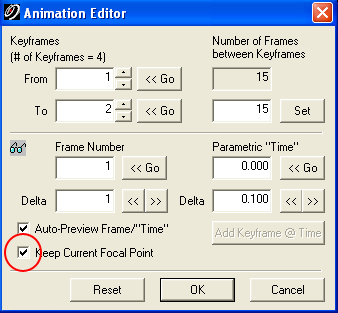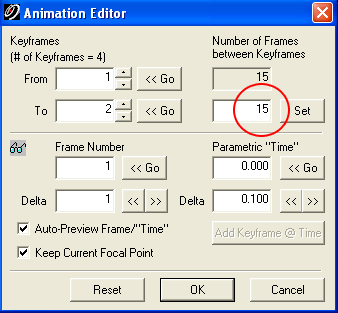
This is old news, but it is worth posting here for users thinking about purchasing point cloud software in the near future.

Ottawa, Canada, Tuesday, September 23, 2008 — Autodesk, Inc. has signed an agreement with Ambercore Software to license its point cloud technology and incorporate
it into future releases of Autodesk software. Point clouds are extremely large data files usually created through the use of laser scanning, high definition surveying, or LIDAR (Light Detection and Ranging). They provide a more accurate representation of existing conditions whether of a terrain surface or urban center, a roadway or bridge, or the interior/exterior of a building.
The Ambercore Software point cloud technology will enable customers to read, store, index, and quickly retrieve the extremely large data sets associated with laser scanning and LIDAR. As a result they will be able to visualize and analyze data in 3D and better build high-precision 3D models. Examples of customer benefits include:
• Local government, utility and telecommunications customers will be able to maximize the return on their investment in large-scale LIDAR mapping and infrastructure projects.
• AEC customers will experience the power of Building Information Modeling (BIM) earlier in the project lifecycle. By providing the capability to incorporate highly accurate LIDAR data into the design process, we will provide a foundation for creating more accurate designs faster. This will be particularly beneficial to our civil engineering customers involved in road and highway design.
“The point cloud technology from Ambercore Software will allow Autodesk customers to easily incorporate extremely large and highly accurate LIDAR data into the design and infrastructure management process,” said Lisa Campbell, vice president, Autodesk Geospatial. “The incorporation of this technology into Autodesk’s portfolio of Geospatial and Building Information Modeling software means that our customers will be able to start with a digital model earlier in the design process or expand the precision and detail of existing infrastructure databases. As a result they will be able to create more accurate design and mapping information and use that information to visualize, simulate, and analyze projects before they are built.”
“Ambercore’s point cloud software has been engineered to efficiently manipulate extremely large spatial data,” said Martin Sendyk, President and CEO of Ambercore Software. “With the increasing proliferation of 3D sensing equipment and resultant point cloud data, the ability to extract intelligence from massive 3D data sets is more important than ever. We are very excited to be solving this challenge with an innovative company like Autodesk.”
About BIM
BIM is an integrated process built on coordinated, reliable information about a project from design through construction and into operations. By adopting BIM, architects, engineers, contractors and owners can easily create coordinated digital design information and documentation; use that information to more accurately visualize, simulate and analyze performance, appearance and cost; and reliably deliver the project faster, more economically and with reduced environmental impact
About Autodesk
Autodesk, Inc. is the world leader in 2D and 3D design software for the manufacturing, building and construction, and media and entertainment markets. Since its introduction of AutoCAD software in 1982, Autodesk has developed the broadest portfolio of state-of-the-art digital prototyping solutions to help customers experience their ideas before they are real. Fortune 1000 companies rely on Autodesk for the tools to visualize, simulate and analyze real-world performance early in the design process to save time and money, enhance quality and foster innovation. For additional information about Autodesk, visit http://www.autodesk.com.
About Ambercore
Ambercore provides enterprise-scale software and service solutions for Energy, Mining and natural resource sectors. With its powerful spatial modeling and simulation software, Ambercore helps clients make important business decisions by collecting, integrating and analyzing 2D and 3D spatial information. Ambercore’s Terrapoint Division has provided LiDAR and other digital mapping services for a diverse clientele in over forty countries for the past twenty years. Terrapoint’s primary focus is to find solutions that fit client needs, and to continue a reputation for meeting and exceeding client demands in the delivery of digital elevation and image data. Service and product offerings include complete airborne LiDAR, and digital imaging for engineering, survey and mapping applications. Ambercore’s TITAN® Division develops leading edge mobile LiDAR systems for ground based high accuracy applications. Best of breed solutions comprised of software, hardware and services have been deployed internationally with tier-one clients. Ambercore is headquartered in Ottawa, Canada with offices in Houston, Calgary, South Africa and Europe. For more information please see www.ambercore.com
Ambercore, Terrapoint, and TITAN are registered trademarks or trademarks of Ambercore Software Inc., and/or its subsidiaries and/or affiliates, in the USA and/or other countries. All other brand names, product names, or trademarks belong to their respective holders. Ambercore reserves the right to alter product offerings and specifications at any time without notice, and is not responsible for typographical or graphical errors that may appear in this document.
Autodesk and AutoCAD are registered trademarks or trademarks of Autodesk, Inc., and/or its subsidiaries and/or affiliates, in the USA and/or other countries.
Press Information:
Samantha Mabey, Ambercore Software
Tel.: 613-216-0082
E-mail (press only): press@ambercore.com
General Information: contact.us@ambercore.com
Please visit our website at www.ambercore.com

 After three (3) years of development, ClearEdge3D is excited to announce today, June 5, 2009, the general release of EdgeWiseTM.
After three (3) years of development, ClearEdge3D is excited to announce today, June 5, 2009, the general release of EdgeWiseTM. Note: Hexagon Metrology is owned by Hexagon AB Group which also ownes Leica Geosystems. It will be interesting to see if any of this functionality will end up in Cyclone.
Note: Hexagon Metrology is owned by Hexagon AB Group which also ownes Leica Geosystems. It will be interesting to see if any of this functionality will end up in Cyclone.






